Mainstream
TF2 Wednesdays – An Introduction To Competitive Team Fortress (Part 2)
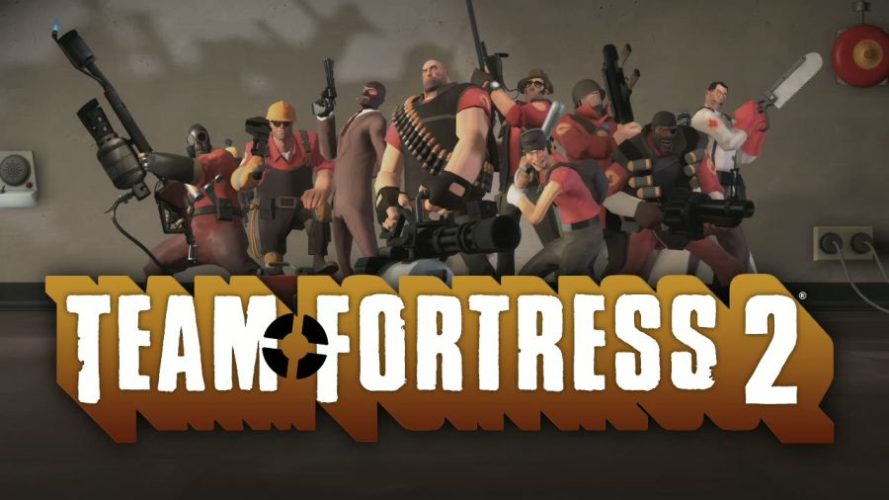
 Every Wednesday, Patrick Panebianco (better known by his online alias ‘Shintaz’) shares his knowledge, opinion and passion for competitive gaming in Team Fortress 2. Each week holds something different, ranging from interviews, to tips and guides, to past experiences. All things said in this series of articles are his opinion and do not reflect the opinions of anybody else.
Every Wednesday, Patrick Panebianco (better known by his online alias ‘Shintaz’) shares his knowledge, opinion and passion for competitive gaming in Team Fortress 2. Each week holds something different, ranging from interviews, to tips and guides, to past experiences. All things said in this series of articles are his opinion and do not reflect the opinions of anybody else.
This week, he continues to tell you about a different competitive game-type (Highlander) and why he thinks that TF2 is best player competitively! If you haven’t already read the first part, go here!
Before I start the second part of this series of TF2 articles, let’s just recap what we’ve already been through:
- Competitive TF2 is different to public TF2. This doesn’t make it bad
- There are ups and down to both competitive and public TF2
- Somebody had to correct me on the origins of TF2
- My writing has a lot of randomly bolded words or sentences
So, this week, let’s cut to the chase. We’ve discussed public TF2, the “standard” format of competitive TF2 (6v6), and now we’re going to go through (for want of a better phrase) the other format of competitive TF2: Highlander (that’s 9v9 to you and me). So, readers, I hear you ask: What is Highlander? Well, that’s what I’m here to tell you!
Picture source: ETF2L (I’m sure that lovable lot won’t mind)
Some of you may already know what Highlander is – after all, it is a game-type which you can find on a public server! I hate to say that I’m not amazingly experienced in Highlander, but I have played it, and I definitely see the appeal. Highlander, by many, is seen as the gateway into competitive TF2 from public TF2. Many others see it as how competitive should be, as it utilises every class in a match, rather than sticking to the regular format of two scouts, two soldiers, one medic and the most overpowered piece of sh- er, one demoman. As with 6v6, let’s have a quick rundown of what Highlander is all about:
- ‘Understandable’ class limits – only one of each class can be played at any one time (per team, obviously)
- Lenient weapon limits – many more weapons are allowed in a Highlander match than in a 6v6 match.
- Maps: a diverse range of maps, and it doesn’t revolve around 5CP mirrored maps – you’ll actually be able to play payload and cp_steel!
If you’re interested in the full rulesets, here they are: Europe, America
Now, I know what you’re thinking: not only is this Patrick guy great at writing articles, but I bet he’s really good looking too. But that’s beside the point, let’s stay on topic. In comparison to 6v6, Highlander clearly allows more diversity, lets you play your favourite class and is generally less ‘structured’ than 6v6 to encourage the use of multiple load-outs, maps, etc. Not many people know it, but I was actually part of a Highlander team once, and I had great fun – but to me, and many others, Highlander was simply an ‘escape’ from the seriousness that 6v6 needed in order to be the very best! This isn’t to say that I’m cussing down Highlander in any way, but, personally, I’ve had better experiences with 6v6. I may be coming across as a bit biased currently, and my words can only deliver so much of what Highlander has to offer – so once again, I present to you a video which captures the wide range of possibilities in Highlander:
Once again by the lovely CUBE – check this article out for some of his other work
So: at this stage, we’ve discussed public TF2, 6v6 TF2 and Highlander. As always, let’s list the pros and cons of Highlander:
Pros
- Class diversity (how many times will I use that word in one article?) – a multitude of load-outs is at your fingertips, and every class is available for the taking
- Map diversity – as much as they like to complain against it, the 6v6 community is bound by mirrored 5CP maps. In Highlander, you get to play the likes of Badwater and Lakeside
- Similar to what you may already know – the chaos of public TF2 brought to competitive by simply adding a few more numbers and different rules
- It also has lovely, lovely prizes!
Cons
- Not seen as prestigiously as 6v6 – if you’re the best at Highlander, you’re not going to get sponsored to travel
- It’s harder to put a team of nine together than it is to put a team of six together
- Time constraints (again) – unlike public TF2, you’ll need to put aside some of your spare time to practice if you want to reach the top
If you want to get started in Highlander, ETF2L is your best bet if you’re European, and UGC if you’re American.
So, that’s it – I’ve told you what I can about public TF2, 6v6 TF2 and Highlander. But why have I done this? Is it because I’m obnoxious and want my voice heard? Is it because I want to show you that if you dislike 6v6 you are wrong? Well, actually, neither of these are the case. What I want to do by the end of the article is to convince you that competitive Team Fortress 2 is definitely a venture worth your time!
Competitive vs. Public – the ultimate battle!
Beginning note: competitive will be 6v6, not Highlander.
LG| Mackey showboating at the finals of i46 after a big play
So, I guess it’d be a great time for my introduction to finally be relevant. Hi, I’m Patrick “Shintaz” Panebianco. I used to be in one of Europe’s best Team Fortress 2 teams, Epsilon eSports, and my main class was scout. Throughout my time in TF2, I was able to win some money (and hardware prizes!), meet great people and refine my FPS skills in general. I entered competitive TF2 in early 2008 – so the fierce range of weapons and hats were yet to be introduced to the game.
Like many reading this article (I hope so anyway, these are the people I’m trying to reach out to) I was huge about public TF2. I loved it. I was 15 years old when I started playing and I couldn’t get enough. I’d rush my little legs home from school every day, slam my bag on the floor, boot up the PC and [try to] frag people all day. It was my first “real” game, in which I spent most of my spare time on. However, as days went on, I began to realise that nearly every day was the same – no matter what class I played, I was getting bored. Now, the problem is, that may not be the case for some of you – what with the fact that each class has approximately 100,000 unlocks, I’m sure you’re still loving it. But that’s no reason to stop reading and disregard everything I say.
I don’t want to run you through my journey (let’s save that for another article, shall we?), but the point I’m trying to make is: when you play competitive TF2, no two games are the same. A pretty lame point to make, considering the same is also statistically true for every game ever made, including Chess. So why not go competitive in Chess? Well, if you have a passion for Chess, go for it. However, there are many other points I’d like to make about TF2 before you go off and beat Viswanathan Anand (he’s the current World Chess Champion – yes, I Googled it):
- No two games are the same. Sorry for making the same point twice, but I figured listing them would stop you from falling asleep. I wouldn’t want this part of the article to look like one of AcidreniX’s comments (that’s funny to the competitive EU lot. If you start playing competitively, you’ll get that joke!)
- Companionship. As cheesey as it sounds, it’s absolutely true. Personally, I much preferred making and interacting with great friends than hearing somebody scream at me whenever I didn’t Über him. The memories you make with your TF2 friends will stick with you for life. I still have mad amounts of love for people I met way over three years ago (again, maybe save this for another time).
- Side note: I had my playlist on shuffle here, and ‘Aerodynamic’ came straight after ‘One More Time’. ON SHUFFLE. It was immense.
- Competitiveness. Well… duh?! Obviously, this is a bit of a pointless comparison to make, but it’s definitely worth looking into. I’ve literally had my heart racing in times I’ve played Team Fortress 2, but only ever competitively. It gets the blood pumping, it gets the adrenaline going, and you get to kick the crap outta that guy that’s been annoying you for weeks. Why has he been annoying you for weeks? He posts inane nonsense on the forums.
- The community. There’s not much here that I can elaborate on – the community are amazing. There is no doubt in my mind that at this time, competitive TF2 has the most friendly group of people in any game. Sure, you get one or two bad eggs (admittedly, I may have been one of them… MAYBE), but experiencing a LAN with your TF2 buddies will be something that you’ll never regret doing. To compare it against people in a public server who yell at their team for having five spies… Yeah.
The Team Fortress 2 community that attended i46 (sadly, I missed this photo!)
- The learning experience. Hell, I didn’t even know what Scandinavia was before I started competing. More importantly, I learnt how to become good at the game. To link with the previous point, most people at the top of the TF2 ladder are willing to help their fellow man – you have YouTube videos of premiership players analysing their demos, you have top-end players mentoring bottom-end players, and much more! I also learnt that Finnish people are hella attractive (couldn’t resist mentioning you Jh).
- The end result. After a win or a loss, you won’t simply just leave the server and forget all about it. Results are tallied, and discussions with your team are had. Did you do well? Celebrate by congratulating your team and getting the drinks in. Didn’t do so well? Spend time with the friends you’ve made discussing what can be changed. Win some money? Buy some more hats!
I’m never great at concluding articles, but I do want to say this: there is no reason for you not to at least try competitive TF2. Sure, you may have encountered one little prat who thinks he’s the don because he’s played in a team (yeah, that was probably me, sorry about that), but I can assure you that one person does not reflect the attitude of everybody in the community. The above reasons is why I think you should get started – you’ll almost certainly find your own passion for the game in due time.
I’d like to give a huge thank you to the Arie over at VanillaTF2. I’m sure that site will play a huge part in articles to come.
Next week, Patrick takes to the streets of TF2 and asks a range of people why THEY like playing competitively, and why they think you should too!
Gaming News
Best Usenet Newsgroups for Gaming

Usenet newsgroups may seem old-fashioned to many. In reality, they are the perfect place for players who love the classics but are always open to new games and strategies. These internet communities are also ideal for those searching for gaming material, solutions to issues, or a conversation related to their favorite video games. Whether you are an experienced player or entering this domain for the first time, Usenet holds a ton of resources that could change how you interact with the gaming world.
Understanding Usenet Newsgroups
Usenet newsgroups, which include gaming groups, are like message boards. People can post messages and articles in different categories. Each group is a special place for certain topics – this makes it simple to find the subjects you want to read about most. The unique characteristic of Usenet lies in its decentralized structure. This permits a much more open interchange of details and information than what is seen on regular social media platforms or forums.
Initially, Usenet was utilized only for academic and professional exchanges. However, it soon turned into a prevalent method for communicating among hobbyists and gaming groups. Presently, even though Usenet has been surpassed by newer platforms in terms of popularity, it continues to be an important tool for knowledgeable users who value its special mix of staying anonymous with fast communication. Knowledgeable users also love access to vast archives containing historical information and software applications that are no longer available elsewhere on the Internet.
Top Usenet Newsgroups for Mobile Games
comp.mobile.games
This is a fresh group dedicated to discussions about mobile games and related technology matters within the industry. Here, you can find conversations about the coding aspects of creating games for mobile devices, like new updates in platforms or fresh game engines being used for development purposes.
rec.games.mobile
The perfect place for people who play games on their mobile devices as a hobby. Here, users talk about strategies, tricks and discuss game evaluations. This group is also suitable for those who are not serious gamers but like to connect with others and discuss playing strategies.
alt.games.mobile
In this newsgroup, users often discuss gaming fixes and give each other suggestions. It is also the go-to place for gamers and die-hard fans that wish to find each and every detail of the game they love to play.
Best Newsgroups for Video Game Discussions
Newsgroups such as alt.games.video and rec.games.video.arcade have lively communities where gamers often engage in exchanges and conversations. These forums are not only for resolving gaming issues or writing reviews; they are centers of enthusiastic discussion regarding gaming culture, strategy, and creation process. Be it the latest RPGs, energetic shooters or old-school arcade games – there is always a thread bustling with discussion.
In these threads, not only will you encounter a variety of views from across the globe, but you may also land on gaming tricks and shortcuts that are lesser known. For those who are new, remember that every group has its own tone and rules. Lurking for a while should help you understand community norms and ensure your contributions are accepted.
Specialized Gaming Newsgroups
Specialized newsgroups are designed for particular gaming communities. They provide a discussion environment that is more centered and focused. These groups are ideal for users who really love a particular game and want to explore it in great depth.
The benefit of these specific groups is their collection of very particular details. Gamers who are part of such a group often exchange unique things like custom mods or skins, and offer advice on how to make gameplay more efficient and fun.
Tips for Using Usenet Newsgroups for Gaming
To enter Usenet, you will first need to pick a provider that is well-known for security, high retention rates and fast speed. To make the right pick, it is a good idea to get the rankings for the best Usenet providers. Next, get advanced newsreader software, as this will allow you to browse through newsgroups easily and manage your activities effectively.
Focus on newsgroups related to gaming and participate in discussions matching your interests to find gaming buddies. Also, make sure that you follow the netiquette of each group while doing so. Utilize newsreader software functions like filters and automation to keep things simple.
Conclusion
Usenet, at first sight, can appear as a choice for oldies or people that have not yet acclimated to social media platforms and forums. However, its distinct characteristics make it very useful for all kinds of gamers. If you are searching for uncommon information, looking for detailed conversations or wish to join a community that matches with your specific interests; Usenet is surely the place for you. Jump in to see how Usenet can add another element of fun to your gaming experiences!
Casual
Encouraging Growth and Motivation: Resources for Child Development

Child development is a complex journey marked by critical milestones where each stride forward builds upon the foundation of the previous one. Acknowledging children’s individual needs, pediatric therapy services tailor strategies to foster physical, emotional, and cognitive growth. To support this transformative process, environments that prompt curiosity and engagement, coupled with advanced educational tools, play an instrumental role in shaping young minds. These resources, carefully selected and applied, can significantly amplify a child’s developmental trajectory. Keep reading to learn about the effective ways these tools and techniques can aid in advancing childhood milestones.
Pediatric Therapy Services: Enhancing Developmental Milestones
Pediatric therapy services support children as they reach and surpass developmental milestones. These services, often provided by skilled therapists, address various growth challenges, ensuring each child has the best possible start in life. From speech and occupational therapy to physical and behavioral interventions, these professionals tailor their approach to meet the unique needs of every young patient.
Therapists work relentlessly to motivate children, fostering an environment where milestones are not merely achieved but celebrated. Through personalized, one-on-one sessions, children gain the confidence and skills necessary to navigate their developmental journeys more easily. The trust between therapist and child is a solid foundation for consistent progress and paves the path for lifelong learning and adaptation.
Resource provision is a key component of pediatric therapy, equipping parents with the tools to continue therapy practices at home. Effective communication between therapists and families ensures a cohesive strategy that envelops the child’s daily routine, enhancing the therapy’s impact. It also allows parents to identify subtle progress, reinforcing their pivotal role in the child’s developmental success.
If you’re looking for pediatric therapy in your area, a simple Google search like “pediatric therapy Arizona” will help you find local providers and services tailored to your child’s needs, ensuring they receive the specialized care necessary for their development.
Optimizing Play Spaces: Creating Environments for Learning and Exploration
Optimized play spaces are vital platforms where children engage with their world, build skills, and unleash their creativity. Designers of such areas pay astute attention to elements that promote safe exploration and intellectual stimulation. A thoughtfully arranged play environment serves as a place of entertainment and a crucible for burgeoning development.
Professionals incorporate a variety of tactile and visual stimuli within play areas to cater to diverse developmental needs and interests. Stimulating sensory experiences is central to cognitive and motor skill refinement among younger populations. The intentional selection of colors, textures, and interactive features sparks curiosity and encourages physical activity, which is fundamental to healthy growth.
Accessibility remains paramount in creating play spaces, ensuring they cater to children across all abilities. Including adaptive resources within these environments demonstrates a commitment to inclusive development, allowing every child to participate and benefit from the joy and learning play offers. Such inclusiveness fosters a sense of community and belonging, which is essential for emotional and social development.
Affording children autonomy in their play advances self-directed learning and problem-solving capabilities. When children feel empowered to make choices within their play, they better understand their preferences and abilities, setting the stage for confidence and self-awareness — qualities that are instrumental as children grow and transition through life’s stages.
Additionally, incorporating elements like fake plants or outdoor plants from retailers like Nearly Natural outdoor plants into play spaces can enhance children’s sensory and aesthetic experience.
Interactive Learning Tools: Technology and Resources for Cognitive Development
Interactive learning tools harness technology’s power to solidify children’s cognitive development. These digital resources provide an array of engaging, educational content that aligns with critical thinking and problem-solving skills.
Software and applications designed for children’s learning capitalize on the allure of multimedia to capture young minds. Effective education solutions provide children with stimulating challenges that are age-appropriate and aligned with developmental targets.
The discerning use of educational technology in classrooms and homes can reinforce concepts and skills taught through traditional methods. It creates a harmonious blend of instruction and interactive play, thereby cementing a child’s understanding and retention of information.
Providers of such educational platforms are ever vigilant, updating content to reflect new educational strategies and the latest academic research. Thus, children equipped with these technological tools remain at the vanguard of current learning methodologies, all while engrossed in fun and dynamic ways.
Overall, caregivers and educators can provide comprehensive support for children’s developmental journeys by integrating pediatric therapy services, optimized play spaces, and interactive learning tools. These resources nurture their physical, emotional, and cognitive growth and cultivate a lifelong love for learning and exploration.
Features
Why Investing in Academics Is Investing in Yourself

The quest for knowledge and self-improvement through academic pursuits is more than just a milestone in life; it is a cornerstone of personal development and success. Committing resources to further education is not merely an expense; it is an investment with considerable returns that extend far beyond the classroom. Education equips us with the tools required to navigate an increasingly complex world, opening doors to opportunities and fostering personal growth. Keep reading to discover why allocating time and resources to your academics is a decision that pays dividends for a lifetime.
The Lifelong Returns of Investing in Your Education
Investing in education is akin to planting seeds that blossom into numerous opportunities. Beyond financial gains, education forms the bedrock for career success and personal fulfillment. It empowers individuals to pursue their passions, enhances job satisfaction, and boosts self-esteem through academic achievements. Education serves as a catalyst for social mobility, breaking cycles of poverty by equipping people with the skills needed to improve their lives and contribute positively to society.
This ripple effect extends to lower crime rates and increased civic engagement, benefiting communities at large. Beginning with scholarships for high school sophomores can provide the initial support needed to embark on this transformative journey. These opportunities signify a commitment to nurturing future leaders and fostering a culture of lifelong learning and achievement.
Personal Growth and Lifelong Learning Through Education
Education is a vital aspect of personal development, providing opportunities for growth, character building, and discovering passions and capabilities. It fosters resilience and adaptability, which are essential in all aspects of life. A strong educational foundation encourages lifelong learning, ensuring individuals remain relevant and proactive in their professional and personal lives.
Education also broadens perspectives, exposing individuals to diverse ideas, cultures, and worldviews, fostering empathy, cross-cultural understanding, and appreciation for the human experience. It also allows for critical assessment and engagement with the world from an informed standpoint. The journey through academia often involves self-discovery, helping students uncover their strengths, weaknesses, interests, and values, leading to a more fulfilled life with aligned choices and goals.
Expanding Your Horizons: The Social Benefits of Academics
Academic investment in education is about building social capital through interactions with peers, faculty, and industry professionals. These interactions foster communication skills and relationships, which are crucial for life stages. Extracurricular activities in academic settings provide platforms for students to express themselves, learn new skills, and take on leadership roles.
Collaborative projects and team-based assignments teach students the importance of teamwork, compromise, and collective pursuit of goals. Higher education institutions also serve as a microcosm of society, requiring social awareness and finesse to navigate the diverse cultural, economic, and ideological perspectives.
How Academic Achievement Propels Professional Success
Professional success often hinges on a blend of experiences and achievements, with academic accomplishments playing a crucial role. Excelling in academia fosters a strong work ethic and sharp time-management skills, highly valued in today’s job market. Employers frequently use academic credentials to gauge candidates, especially for specialized roles like those requiring an aa in paralegal studies, where in-depth knowledge is pivotal.
Moreover, higher education equips individuals with specialized knowledge and technical skills that are indispensable in complex roles. Critical thinking and problem-solving abilities, nurtured during academic pursuits, further enhance one’s capacity to tackle challenges creatively. The networks formed during academic years often open doors to valuable career opportunities through mentorships and connections.
Leveraging Educational Investments for Career Advancement Opportunities
Investing in education can significantly impact career advancement, as academic qualifications often lead to promotions, leadership roles, and exclusive professional circles. Continuous education can lead to specialized career paths with higher salaries and statuses, especially in evolving fields. Higher education institutions offer career services like resume-building workshops and job placement programs to help students transition from academia to the workforce effectively.
For those already in the workforce, further education can be a strategic move for career change or progression, with flexible online programs and part-time options allowing working professionals to pursue additional qualifications while maintaining their current positions.
Altogether, the investment in academics is a far-reaching decision that impacts not just your immediate circumstances, but your future potential. As you prioritize your academic pursuits, you build a stronger foundation for success in every aspect of life—professionally, personally, and socially.
-

 Guides5 years ago
Guides5 years ago6 Proven Ways to Get more Instagram Likes on your Business Account
-

 Mainstream10 years ago
Mainstream10 years agoBioWare: Mass Effect 4 to Benefit From Dropping Last-Gen, Will Not Share Template With Dragon Age: Inquisition
-

 Mainstream6 years ago
Mainstream6 years agoHow to Buy Property & Safe Houses in GTA 5 (Grand Theft Auto 5)
-

 Casual2 years ago
Casual2 years ago8 Ways to Fix Over-Extrusion and Under-Extrusion in 3D Printing
-

 Mainstream12 years ago
Mainstream12 years agoGuild Wars 2: The eSports Dream and the sPvP Tragedy
-

 Guides10 months ago
Guides10 months agoFree Fire vs PUBG: Comparing Graphics, Gameplay, and More
-

 iOS Games2 years ago
iOS Games2 years agoThe Best Basketball Games for IOS
-

 Gaming News1 year ago
Gaming News1 year agoSwiping, Tapping, and Tilting: How Mobile Games Are Played Today

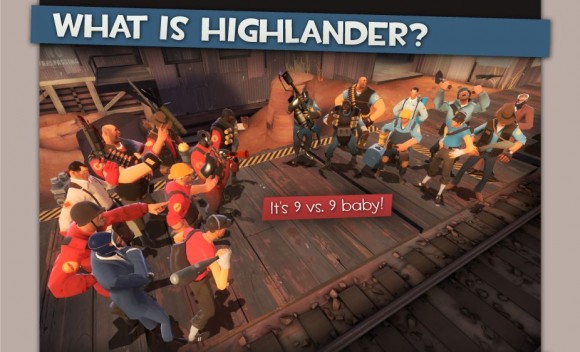



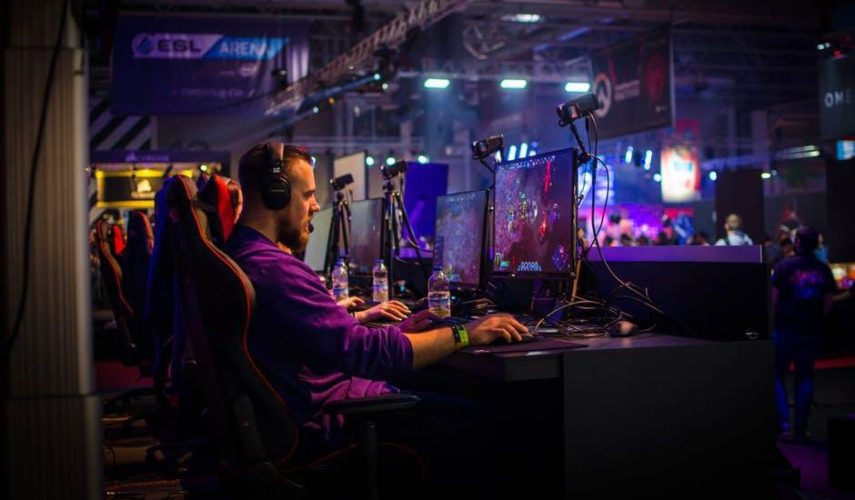
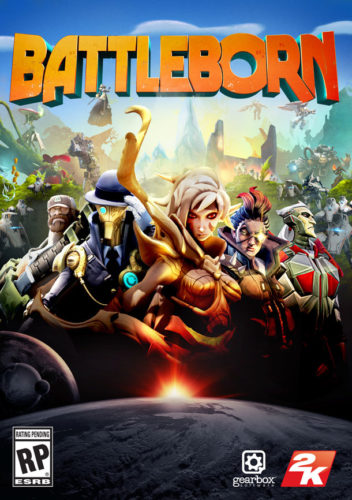

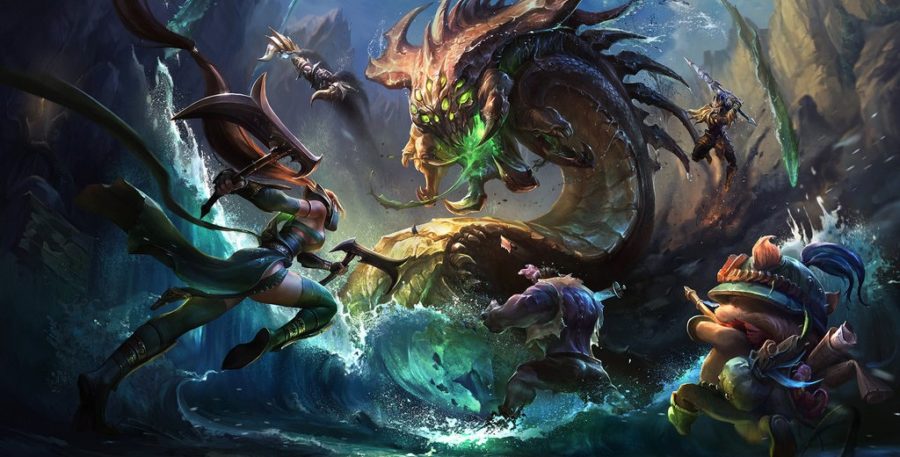
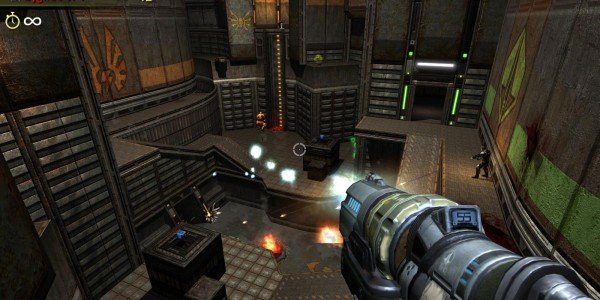
HarveyMam
November 4, 2015 at 7:41 pm
In TF2 s case, the split is even more pronounced, as current competitive formats ban a majority of the game s numerous weapons. Hopes are high that a global system for matchmaking integrated directly into the client will unify a competitive standard and surge interest toward the competitive format. Of course, exactly how that is to be done, will be the dev team s great challenge.